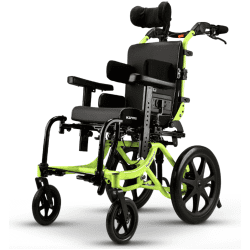Table of Contents
ToggleAre you curious about autism and how often it is seen in the general population? It’s a condition that affects many people, yet there is still much to learn about this multifaceted disorder. In this blog post, we’ll explore how common is autism in the United States and worldwide.
In addition, we’ll look at factors that could influence prevalence rates as well as how changes in diagnostic methodology may have affected the perceived frequency of autism diagnoses over time.
How Common Is Autism In The World?
Autism affects around 1 in 100 children throughout the globe. However, there is a wide range of variation in the stated prevalence. Thus, this estimate should be taken with a grain of salt. However, even greater numbers have been observed in a few well-conducted investigations.
What Causes Autism
The exact causes of autism are still being researched, and it is believed to be a complex condition with multiple factors contributing to its development. Here are some of the factors that have been identified:
1. Genetic Factors
Is autism genetic? Research suggests that genetics plays a significant role in autism. Certain genes or combinations of genes may increase the likelihood of developing autism. However, no single gene has been identified as the sole cause, and the genetic architecture of autism is believed to be highly complex.
It is believed that 40–80% of ASD risk may be attributed to genetic factors. Each person’s chance of getting this complicated disorder is based on a combination of their genetic predisposition and known and unknown environmental risk factors.
2. Environmental Factors
Unavoidable environmental influences may contribute to the development of autism, but their specific impact is not yet fully understood. Factors such as prenatal exposure to certain medications, toxins, or infections during pregnancy and complications during birth have been investigated as potential risk factors.
3. Brain Development
Studies have shown that individuals with autism may have different brain structure and connectivity. These differences can affect the development and functioning of various areas of the brain involved in social interaction, communication, and sensory processing.
It’s important to note that autism is not caused by vaccines or parenting style, as debunked by extensive scientific research. Instead, the prevailing consensus among experts is that a combination of genetic and environmental factors contributes to the development of autism.
However, more research is needed to fully understand the underlying causes and mechanisms involved.
Why is Autism Increasing?
There has been a dramatic increase in the number of CDC-reported cases of autism among youngsters. Rising rates may indicate an increased public understanding of ASD and efforts to treat more kids. Possible contributors to the rise in diagnosis include environmental hazards, low birth weight, and depression.
The question of whether autism is actually increasing or if it just appears that way due to improved awareness, diagnostic criteria, and increased reporting is still a subject of debate among researchers and experts in the field. However, several factors could contribute to the perceived increase in autism prevalence:
1. Broadening of Diagnostic Criteria
Over time, the diagnostic criteria for autism spectrum disorder (ASD) have expanded, leading to a wider range of individuals being diagnosed. This expansion has resulted in more people being identified with autism who may not have been diagnosed in the past.
2. Increased Awareness and Improved Detection
Greater awareness of autism and increased efforts to screen and diagnose individuals have likely led to more accurate identification of autism cases. In addition, healthcare professionals, educators, and parents are now more knowledgeable about the signs and symptoms of autism, which can facilitate earlier diagnosis.
3. Changes in Diagnostic Practices
Changes in how autism is diagnosed and classified can also contribute to the perceived increase. For example, the Diagnostic and Statistical Manual of Mental Disorders (DSM-5) released in 2013 introduced significant changes to the diagnostic criteria for autism, potentially resulting in more individuals meeting the criteria for diagnosis.
4. Environmental and Genetic Factors
While research is ongoing, it is hypothesized that a combination of genetic and environmental factors may play a role in the development of autism. However, it’s important to note that there is no single identifiable cause of autism, and it is likely to be a complex interplay of various factors.
Why s Autism More Common In Boys
Autism spectrum disorder (ASD) is more commonly diagnosed in boys than girls. The exact reasons behind this gender disparity are still not fully understood, but researchers have proposed several theories.
Some studies suggest that genetic factors may contribute to the higher prevalence of autism in boys. For example, certain genes or gene mutations might increase the risk of developing autism, and these genetic factors may be more prevalent or have a stronger effect in males.
Another hypothesis is related to the X-chromosome. Since males have one X-chromosome and one Y-chromosome, while females have two X-chromosomes, it is suggested that certain genes on the X-chromosome may be involved in autism.
For example, suppose a male inherits a genetic variant associated with autism on his X-chromosome. In that case, he may be more likely to develop ASD due to the absence of a second X-chromosome to compensate for any potential genetic abnormalities.
Researchers also propose that diagnostic biases could contribute to the observed gender disparity in autism diagnoses. It is suggested that the diagnostic criteria for autism might be more biased towards identifying and diagnosing boys, leading to underdiagnosis or misdiagnosis in girls. This could potentially result in underestimating the true prevalence of autism in girls.
Boys and girls may exhibit different behavioral patterns and social characteristics, influencing how autism is identified and diagnosed. Autism is often characterized by difficulties in social interaction and communication and repetitive or restricted behaviors.
These characteristics may be more easily recognized or more pronounced in boys, leading to a higher likelihood of diagnosis.
10 Facts About Autism
- Approximately 1 in 68 American children have autism spectrum disorder (ASD), and more cases are being diagnosed now than ever.
- The prevalence of ASD in males is almost four times that of females.
- Children of any race, ethnicity, and socioeconomic background are at risk for developing ASD.
- Since ASD is a spectrum condition, the abilities, difficulties, and requirements of children with the disorder vary widely.
- We still don’t fully understand what triggers autism spectrum disorder (ASD), but research suggests that genetics, early brain development, and environmental factors are all vital players.
- Children may often be diagnosed with ASD by the age of 2. However, earlier identification is possible
- Children with ASD benefit from early diagnosis and treatment
- Although there is currently no treatment that may reverse the effects of ASD, many therapies can help youngsters develop useful abilities.
- Children’s results tend to improve with early diagnosis and access to assistance.
- Children on the autism spectrum may learn and achieve great things in school and life.
- Kids with autism spectrum disorder may flourish just like any other child with the support of their loved ones, caretakers, medical professionals, and peers.
To Sum Up
Autism is a common and complex disorder with no single cause yet identified. While the exact reasons behind the gender disparity in autism diagnoses remain unclear, evidence suggests that genetic factors, X-chromosome inheritance, diagnostic biases, and differences in behavior expression may play a role in this phenomenon.





































